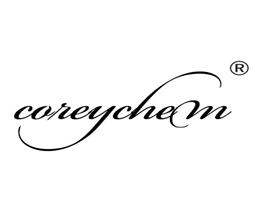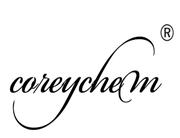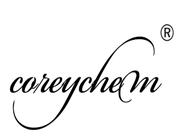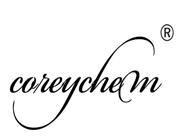1/1
Tetrahydrofurfuryl alcohol
$ 1.00
/1IU
- Min. Order1KG
- Purity99%
- Cas No97-99-4
- Supply Ability100kg
- Update time2019-12-29

career henan chemical co
6YR
 China
China
Since2014-12-17
AddressRoom 702, Floor 7, Building 10, National University Science Park, High-Tech Zone, Zhengzhou City, H
Chemical Properties
| Product Name | Tetrahydrofurfuryl alcohol |
| CAS No | 97-99-4 |
| EC-No | |
| Min. Order | 1KG |
| Purity | 99% |
| Supply Ability | 100kg |
| Release date | 2019/12/29 |
▼
▲
▼
▲
▼
▲
Product Name:
Tetrahydrofurfuryl alcohol
Synonyms:
tetrahydro-furfurylalcoho;Tetrahydrofurfurylalkohol;Tetrahydrofuryl carbinol;Tetrahydrofurylalkohol;tetrahydrofurylalkohol(czech);tetrahydrofurylcarbinol;TETRAHYDROFURFURYL ALCOHOL, 98%TETRAHYDROFURFURYL ALCOHOL, 98%TETRAHYDROFURFURYL ALCOHOL, 98%;Tetrahydrofurylmethanol
CAS:
97-99-4
MF:
C5H10O2
MW:
102.13
EINECS:
202-625-6
Product Categories:
-;Building Blocks;C4 to C7;Chemical Synthesis;Heterocyclic Building Blocks;fine chemical;Solvent for fats, waxes, resins, in organic synthesis.;Pharmaceutical intermediates;Furan&Benzofuran;Furans
Mol File:
97-99-4.mol

▼
▲
Tetrahydrofurfuryl alcohol Chemical Properties
▼
▲
Melting point
-80 °C
Boiling point
178 °C(lit.)
density
1.0543
vapor density
3.52 (vs air)
vapor pressure
2.3 mm Hg ( 39 °C)
FEMA
3056 | TETRAHYDROFURFURYL ALCOHOL
refractive index
n20/D 1.452(lit.)
Fp
183 °F
storage temp.
Store below +30°C.
solubility
acetone: miscible(lit.)
pka
14.44±0.10(Predicted)
form
Liquid
color
Clear
explosive limit
1.5-9.7%(V)
Water Solubility
soluble
Sensitive
Hygroscopic
JECFA Number
1443
Merck
14,9213
BRN
102723
InChIKey
BSYVTEYKTMYBMK-UHFFFAOYSA-N
CAS DataBase Reference
97-99-4(CAS DataBase Reference)
NIST Chemistry Reference
2-Furanmethanol, tetrahydro-(97-99-4)
EPA Substance Registry System
Tetrahydrofurfuryl alcohol (97-99-4)
▼
▲
Safety Information
▼
▲
Hazard Codes
Xi,T
Risk Statements
36-62-61
Safety Statements
39-36/37/39
RIDADR
NA 1993 / PGIII
WGK Germany
2
RTECS
LU2450000
Autoignition Temperature
282 °C
TSCA
Yes
HS Code
29321300
Hazardous Substances Data
97-99-4(Hazardous Substances Data)
Toxicity
LD50 orally in Rabbit: 1600 mg/kg
▼
▲
MSDS Information
▼
▲
Provider
Language
THFA
English
SigmaAldrich
English
ACROS
English
ALFA
English
▼
▲
Tetrahydrofurfuryl alcohol Usage And Synthesis
▼
▲
Chemical Properties
Colorless to light yellow liqui
Chemical Properties
Tetrahydrofurfuryl alcohol has a faint, warm, oily, caramellic odor with a coffee and nut-like flavor at very low levels (0.03 to 1 ppm).
Occurrence
Reported found in shoyu (fermented soya hydrolysate), coffee and fresh mango.
Uses
Solvent for vinyl resins; dyes for leather; chlorinated rubber; cellulose esters; solvent softener for nylon; vegetable oils; coupling agent; organic synthesis.
Preparation
By catalytic reduction of furfural with Raney-Ni; also by destructive hydrogenation of lignin.
General Description
A clear colorless liquid with a mild odor. Flash point 167°F. Vapors are heavier than air.
Air & Water Reactions
Denser than water and soluble in water.
Reactivity Profile
Acetyl bromide reacts violently with alcohols or water [Merck 11th ed. 1989]. Mixtures of alcohols with concentrated sulfuric acid and strong hydrogen peroxide can cause explosions. Example: An explosion will occur if dimethylbenzylcarbinol is added to 90% hydrogen peroxide then acidified with concentrated sulfuric acid. Mixtures of ethyl alcohol with concentrated hydrogen peroxide form powerful explosives. Mixtures of hydrogen peroxide and 1-phenyl-2-methyl propyl alcohol tend to explode if acidified with 70% sulfuric acid [Chem. Eng. News 45(43):73. 1967; J, Org. Chem. 28:1893. 1963]. Alkyl hypochlorites are violently explosive. They are readily obtained by reacting hypochlorous acid and alcohols either in aqueous solution or mixed aqueous- carbon tetrachloride solutions. Chlorine plus alcohols would similarly yield alkyl hypochlorites. They decompose in the cold and explode on exposure to sunlight or heat. Tertiary hypochlorites are less unstable than secondary or primary hypochlorites [NFPA 491 M 1991]. Base-catalysed reactions of isocyanates with alcohols should be carried out in inert solvents. Such reactions in the absence of solvents often occur with explosive violence [Wischmeyer 1969].
Health Hazard
Inhalation or contact with material may irritate or burn skin and eyes. Fire may produce irritating, corrosive and/or toxic gases. Vapors may cause dizziness or suffocation. Runoff from fire control or dilution water may cause pollution.
Carcinogenicity
Tetrahydro-2-furanmethanol was not mutagenic to S. typhimurium strains TA100, TA1535, TA1537, or TA98 in an in vitro gene mutation assay or to E. coliWP2uvrA/pKM101 with or withoutmetabolic activation. No chromosomal aberrations or polypoidy were observed when tetrahydro-2-furanmethanol was added to cultured Chinese hamster lung cells with or without metabolic activation .
▼
▲
Tetrahydrofurfuryl alcohol Preparation Products And Raw materials
▼
▲
Raw materials
Hydrogen-->Furfural-->Furfuryl alcohol
Preparation Products
11b,21-Dihydroxy-2'-methyl-5'bH-pregna-1,4-dieno[17,16-d]oxazole-3,20-dione 21-acetate-->(R)-(+)-2-Tetrahydrofuroic acid-->1-TETRAHYDROFURFURYL-PIPERAZINE-->Dihydropyran-->Tetrahydrofurfuryl bromide-->1,5-Pentanediol-->Tetrahydrofurfuryl chloride-->2-(Aminomethyl)-1-ethylpyrrolidine-->TETRAHYDROFURFURYL ACETATE
Company Profile Introduction
Established in 2014,Career Henan Chemical Co. is a manufacturerspecializing in the sale of fine chemicals. Mainly deals in the sales of: Pharmaceutical intermediates OLED intermediates: Pharmaceutical intermediates; OLED intermediates;



